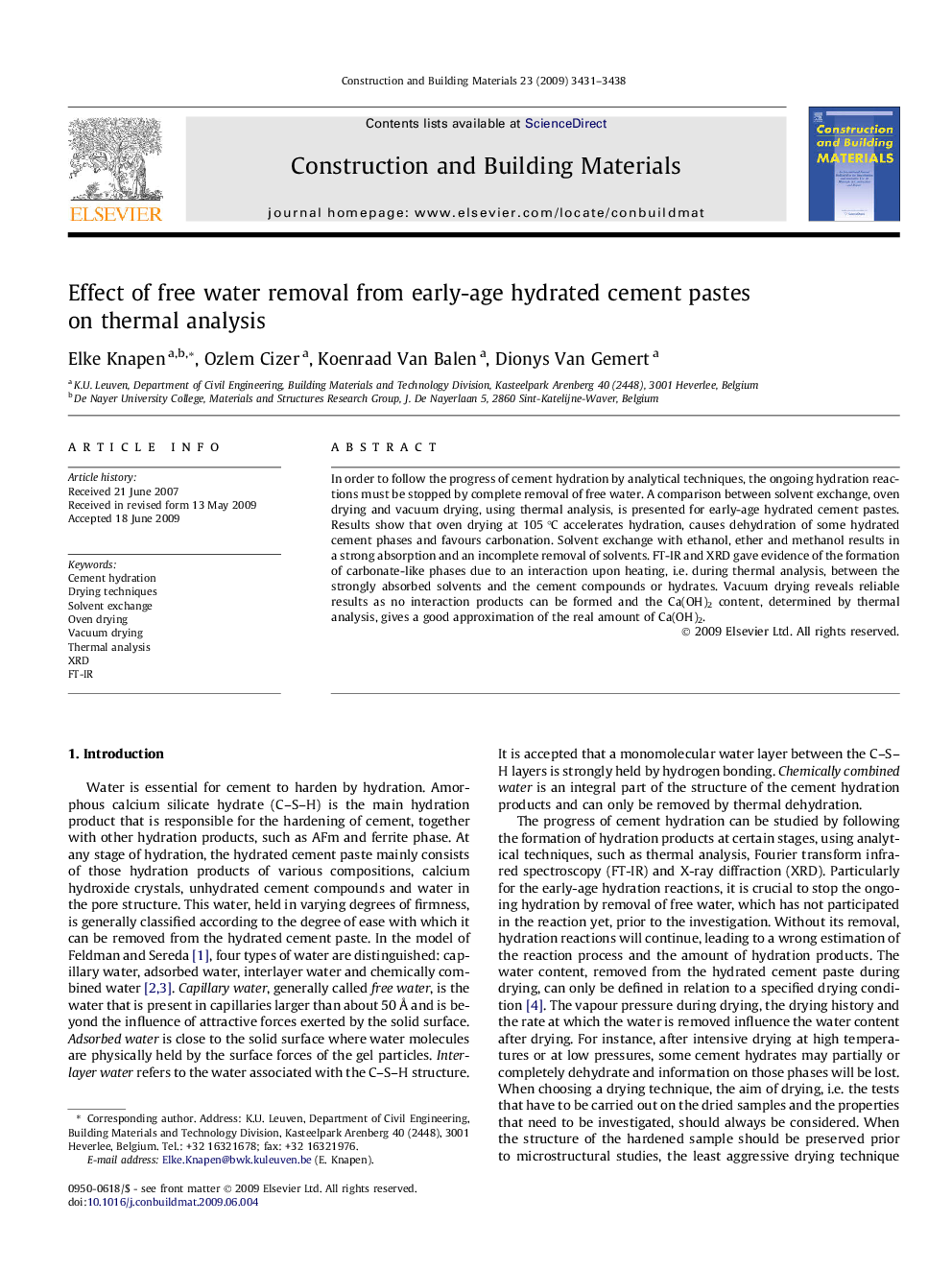| Article ID | Journal | Published Year | Pages | File Type |
|---|---|---|---|---|
| 260033 | Construction and Building Materials | 2009 | 8 Pages |
In order to follow the progress of cement hydration by analytical techniques, the ongoing hydration reactions must be stopped by complete removal of free water. A comparison between solvent exchange, oven drying and vacuum drying, using thermal analysis, is presented for early-age hydrated cement pastes. Results show that oven drying at 105 °C accelerates hydration, causes dehydration of some hydrated cement phases and favours carbonation. Solvent exchange with ethanol, ether and methanol results in a strong absorption and an incomplete removal of solvents. FT-IR and XRD gave evidence of the formation of carbonate-like phases due to an interaction upon heating, i.e. during thermal analysis, between the strongly absorbed solvents and the cement compounds or hydrates. Vacuum drying reveals reliable results as no interaction products can be formed and the Ca(OH)2 content, determined by thermal analysis, gives a good approximation of the real amount of Ca(OH)2.
